Tens of thousands of flamingos congregate annually in Talawe Wetlands, in Navi Mumbai on India’s west coast. These annual visitors comprise Lesser and Greater Flamingos, the two varieties that migrate to India.
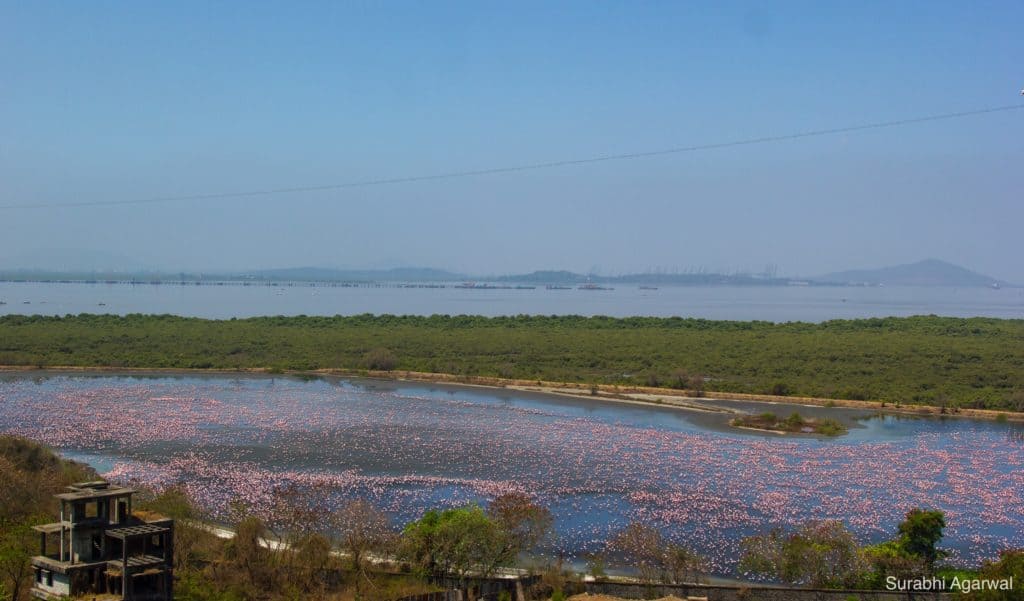
With India’s coronavirus lockdown, this year saw a 25% increase in numbers of these migratory birds. Bombay Natural History Society (BNHS), estimates that number this year may be more than 1,50,000 vis-à-vis 1,34,000 counted last year.
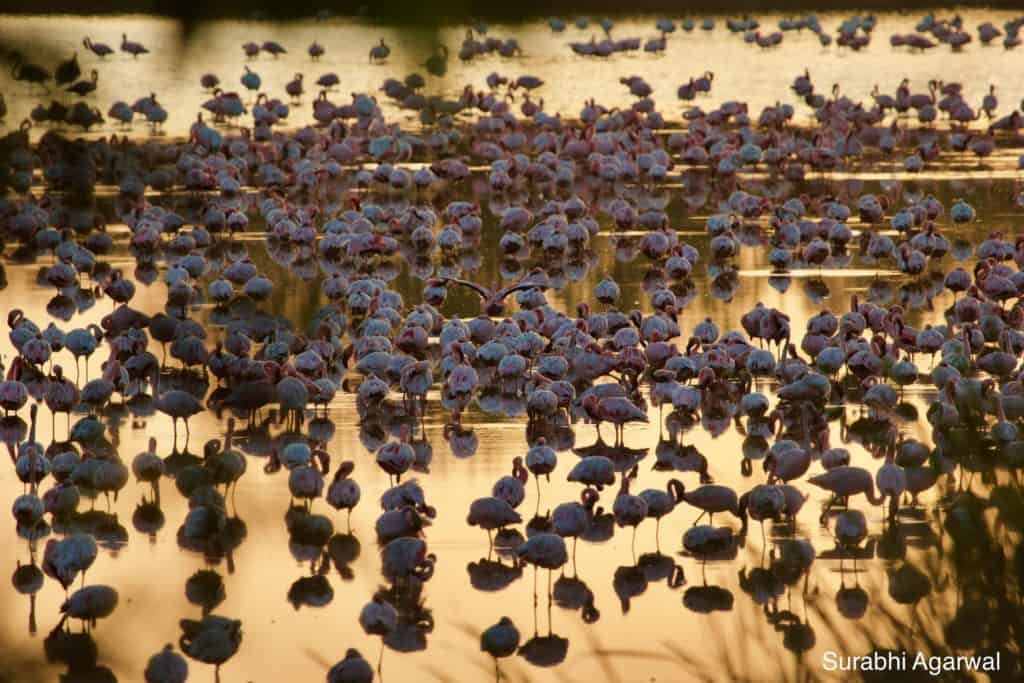
These wetlands, habitat of flamingos, are in danger of being taken over for development for a golf course and a residential complex, by the City and Industrial Development Corporation (CIDCO), but some citizens have been fighting to protect it.
The threat
It was in the summer of 2016, when a group of workers descended overnight to begin slyly hacking the mangroves. When people living in the vicinity approached them to stop work and started filming the activities, they immediately stopped the work but refused to reveal who had assigned them to the task.
Alarm bells went up and my parents, citizens of the area Sunil and Shruti Agarwal filed a complaint at the nearest police station of NRI Coastal Police Station, Navi Mumbai.
Everything went silent. No arrests were made, but one fine morning in October 2017, everyone was shocked to see excavator machines digging and creating a boundary and massive fences. This was no time to wallow. The concerned citizens in the vicinity came together to fight this battle. The group members started sharing pictures and videos of these activities from the towers around the area. It became clear that the intention was to destroy 800 trees. On further investigating, the residents found out that they had a letter stating that they were soil testing, but for that as well, the permissions were not in place. In the name of soil testing, they were creating havoc.
The residents also found out that the government had also, on the sly, without consulting the adjoining communities, gotten permission to change the land use from a no-development zone to a regional park zone and residential zone.
Complaints were filed with the wetland committee as well as the local police station, and various authorities and the destruction halted. The aware citizens stood victorious, but unsatisfied, as a lot of damage had already been done. The soil dumped in the wetland had not been removed.
“The builders tried to block the view with their tall fences but fortunately we could watch them from our apartment and document the evidence. They had not anticipated the power of our citizens’ group. We are definitely happy that the work stopped but we need more permanent protection of these areas.”, said Amitabh Singh, another concerned citizen.
Court battle
In March 2018, Sunil Agarwal filed a PIL in Bombay High Court. The Hon’ble court ordered them to remove the dumped soil and in November 2018, the final high court order came in favour of the citizens and directed the state government to protect and preserve mangroves, wetlands and lakes of the city. The court also said that the destruction of water bodies and mangroves will be a violation of fundamental rights under Article 21 of the constitution of India.
This victory instilled confidence in the locals and a strong vigilant community of citizens came into being, spreading awareness about mangroves and wetlands.
“We are delighted with this decision but our fight doesn’t end here. People need to be vigilant, report destruction and question authorities without shying away or being scared. Permissions must be challenged if they are violative of environmental laws.”, said Sunil Agarwal.
Community involvement
People took note of the acts of misdemeanor, destruction and systematic burning of mangroves and reported them to authorities. There were events such as marathons, nature trails, awareness walks, expanding the community of aware citizens, extending beyond just this locality.
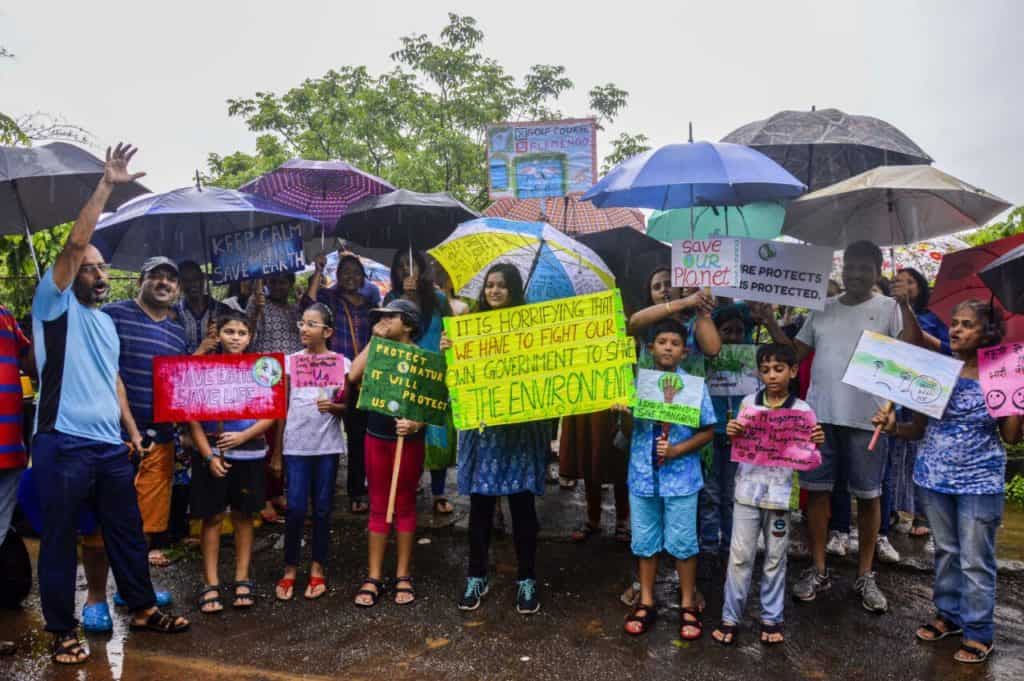
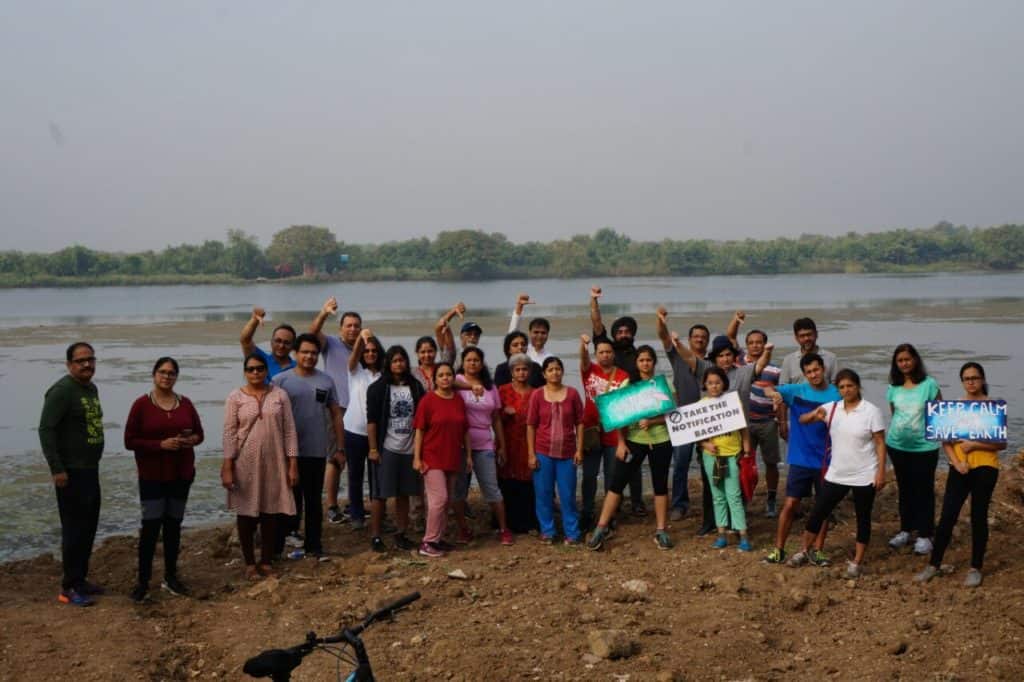
The citizens continued to fight and work towards a more permanent solution to prevent incidences of any such mischief in the future, while on the legal front, the Supreme Court is now hearing the case and it will determine who will win, CIDCO and the builders’ interests or flamingos and the citizens fighting for the larger good.
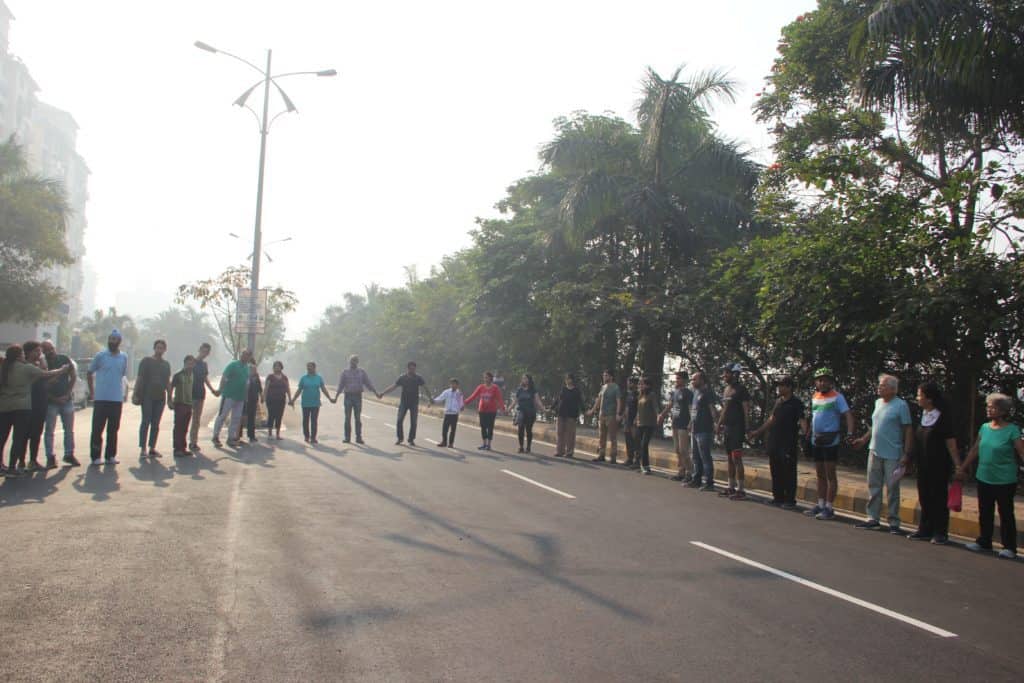
An affidavit submitted by Maharashtra Coastal Zone Management Authority (MCZMA) in court had revealed that what enabled the approval of this project of residential towers and golf course was a statement by CIDCO that there are no wetlands in the area.
“Public money and time are being drained in these futile battles of land grab under the garb of development. And what are the consequences faced by those responsible for this? Stringent action must be taken to dissuade other authorities from indulging in such lies in the future.”, said Shruti Agarwal.
There is a simple solution, a proposed Flamingo Sanctuary, in the interest of the birds, the people and the flights. Despite a promise made by the state environment minister in January 2020, thousands of reminder emails from concerned citizens and environmentalists like Bittu Sehgal, Sunjoy Monga, there has been no action from the CIDCO MD.
Consequences
Why is it so important to save this parcel of land? Why go to all these lengths?
These 80 hectares of wetlands and mangroves are not only a habitat to rich biodiversity, but also play a crucial role in protecting our shoreline from floods. While the infamous Mumbai floods wash away the city, these mangroves stand guarding Navi Mumbai and ensuring a peaceful night’s sleep for its residents.
If that wasn’t enough to convince you, they also play an important role in carbon removal as they are the most carbon-dense ecosystems in the world. If protected, mangroves act as long-term carbon sinks to this world otherwise awash with carbon emissions.
Another very important concern is that of passenger safety. A report by BNHS shows that if the birds lose their habitat, they will possibly move north. Moving north means going closer to the new airport that is coming up. This poses a huge risk to flights and passenger safety and must not be overlooked.
A step towards victory
The site of the proposed golf course was sold to a private company by a state agency, CIDCO of Maharashtra, after assuring the coastal zone management authority that it was not a wetland.
On 18th June 2020, the Maharashtra forest department approved and published an official document showing six ecologically sensitive areas in the Mumbai Metropolitan Region (MMR) as wetlands. This includes Training Ship Chanakya (13 ha) and NRI Complex (19 ha) in Navi Mumbai, the site of the proposed golf course and residential project. The areas have been listed as ‘satellite wetlands that need to be protected within a 50 km radius of Thane Creek Flamingo Sanctuary (TCFS)’. This is the first time the state has also officially declared its intent to protect these sites as conservation reserves.
“Protecting these wetlands will help us achieve our sustainable development goals and commitments to the global community on Central Asian Flyway that the Prime Minister had announced during the Convention on the Conservation of Migratory Species (CMS COP 13) in Gandhinagar in February,” said Deepak Apte, director, BNHS, in a news article published in Hindustan Times. “They are vital migratory bird habitats and their protection is crucial from the air safety point of view for the Navi Mumbai International Airport.”
This development shakes the basis of approval of the project in the first place which sits on the lie that these are not wetlands. It exposes the truth the citizen activists have been screaming on top of their lungs for all these years – these are wetlands and must be protected.
This article originally appeared on the website of Democracy News Live here, and is published with minor edits after due permission from the website and author.
Also read:
Despite hundreds of crores spent on desilting, why Mumbai could still see flooding this monsoon
A well written article, Surabhi,covering both the joys & disappointments of selfless struggle.
A Flamingo Sanctuary is such a beautiful idea! Let’s make it happen.
Best Wishes.